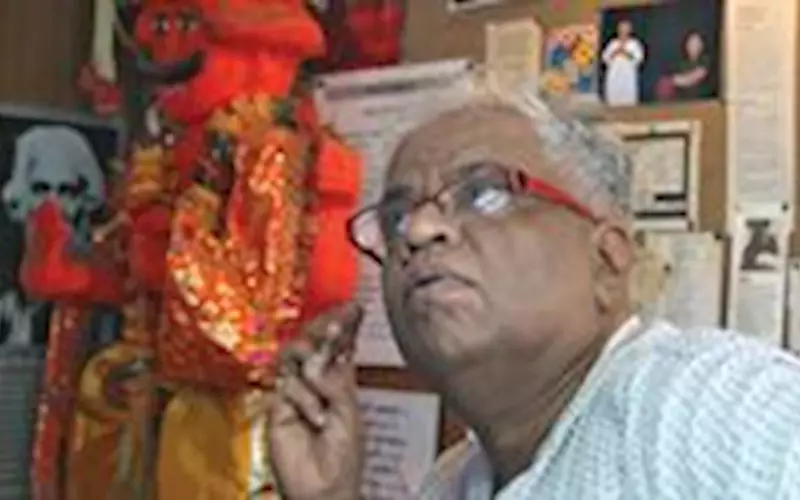A mix of branding and tradition boosts sales of the world's largest calmanac
PrintWeek India - The Salgaokars ensure that Kalnirnay retains its strategic advantage in a competitive market-place, as Ramu Ramanathan finds out.
22 Aug 2013 | By Ramu Ramanathan
Even as Jayraj Salgaokar dips home-made biscuits into tea he wistfully recalls the previous day when he delivered a lecture to post graduate economic students at the University of Mumbai. He was invited by the faculty of his old alma mater to discuss key trends for private enterprise. He is thrilled. And why not?
Today, he is publisher and managing director of Sumangal Press which is a Rs 55-crore company. It prints seven languages of Kalnirnay in various formats and sizes. In 2010, the company sold almost one crore 25 lakh copies of Kalnirnay. This makes it the world's largest selling almanac.
The Indian print industry has always lacked charismatic figures who are public icons. Kalnirnay is a rare exception. Every year, billboards, bus panels and strategically placed advertisements herald the arrival of Kalnirnay. Households in Maharashtra are incomplete without a Kalnirnay.
A date with destiny
Kalnirnay (translated it means, timely decision) came into being in 1972. It is an interesting journey. 30-odd years ago, Jayant Salgaokar, son of an Ayurveda doctor from the picturesque Konkan belt, arrived in Mumbai. It was a humble start with a publication noted for its crossword competitions that offered prize money. The response was stupendous. Salgaokar hadn't estimated such a response and had to borrow so as to compensate the winners. The next step was a "panchang" whereby people could follow a list of ritual, festivals, auspicious time. In the first year, 25,000 copies were sold.
Editions have been produced with a healthy blend of the modern and traditional. It's easy-to-read and low-priced at Rs 10. As Jayraj Salgaokar, son of the senior Salgaokar, says, "Every household in Maharashtra displays a Kalnirnay."
But it's a company that does not rest on its laurels. There are two reasons: One, the ever-changing market sensibility. And two, more than 40 rival "wannabe" brands in Maharashtra which eat into the Kalnirnay pie through reduced costs and extra pages. As Jayraj Salgaokar, son of the senior Salgaokar, says "every year ten imitators come, and ten imitators fold up. This keeps us on our toes and helps us grow."
Manufacturing Kalnirnay
Sumangal Press which prints Kalnirnay relies on Manugraph's Newsline 45 located at the Andheri plant. For its CTP plates, it relies on Mandar Deshpande's pre-press operation which has been set-up in the unit. Besides printing Kalnirnay, the company uses its spare capacity to print Matrubhoomi and suburban supplements. Premium jobs are outsourced to a local commercial print unit.
Building a brand
But much more than its frugal print production, what sets Kalnirnay a part, is its marketing and sales pitch. It's unparalleled. TV, radio, newspapers, and above all, word of mouth publicity. Their thumb rule is, "we spend 5% of our turnover on marketing. This is crucial for our branding." Salgaokar has interesting ideas on branding. He asks, "What did Mahatma Gandhi do? Create a brand called Congress". Sumangal has achieved its success due to media planning and space selling. He adds, "everytime a wall is built, we sell a Kalnirnay".
Today, apart from the sale of the 1 crore 25 lakh calendars, Kalnirnay nets substantial revenue from advertising. They target clients, plan the strategy, organise workshops for the marketing team. Rates for the panels are slotted at Rs 30 lakh per page. Multinationals invest half a million. That's because they see the advertising panel as a premium space which will remain in the public eye for a month - and at times one year.
He adds, "The next big thing is, mobile telephony. It is a big avenue". For this, Kalnirnay has been pushing data with most national mobile networks.
A larger cause
But it's not all about money. Salgaokar opines "a publisher sells a thought, and not paper plus ink." The group has published: the Best of Kalnirnay, Diwali Annual Issue (70,000 copies) and social awareness and women's issues books. Salgaokar wraps up the interview, since he is en route to Konkan. This is for a scheme that could will boost revenue-distribution through online versions of local councils and panchayat raj.
What Kalnirnay has taught us is, reaching out to the poorest requires practical thinking, and not empty slogans. This is what Kalnirnay has been trying to achieve.
KALNIRNAY FACTFILE
Founded in 1972
Specialty Printing, publishing and calendar calmanac
Location Mumbai
Equipment Two lines of Newsline 45, three guillotines plus an in-house CTP service provider
Staff 150
(This article was originally published on 25 February 2010)












 See All
See All